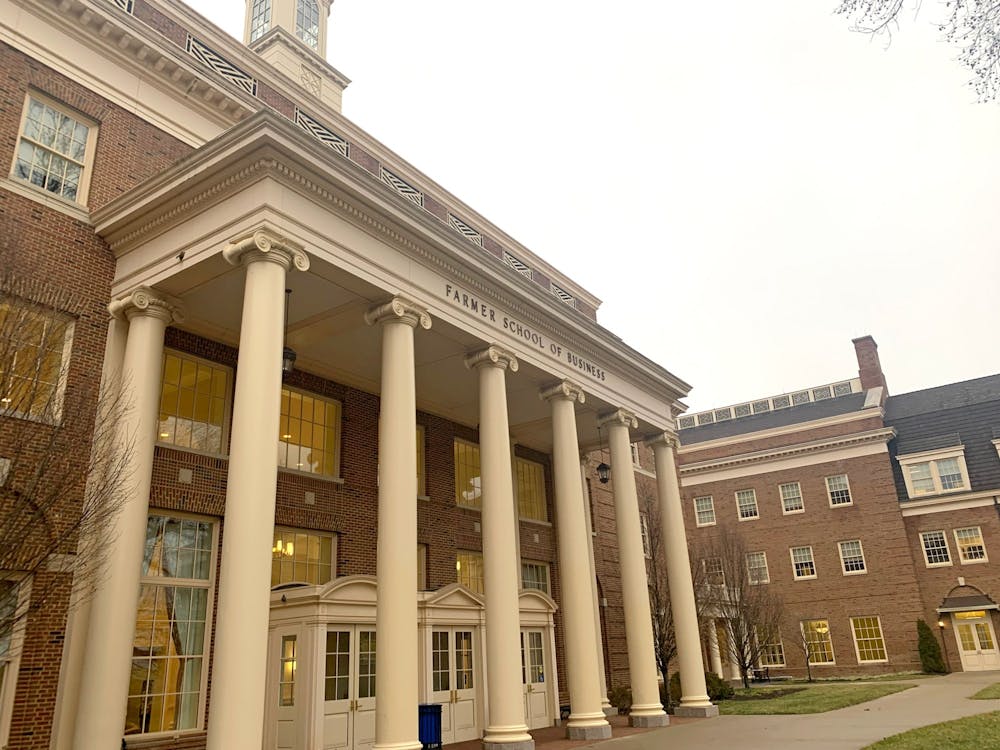Students in three out of the five academic colleges at Miami University find fees on their bills that students in other colleges do not. The Farmer School of Business (FSB), the College of Engineering and Computing (CEC) and the College of Creative Arts (CCA) all charge students on top of their general Miami tuition.
An extra fee of $110 per credit hour is charged for the majority of the courses offered in FSB. According to Miami’s Business Surcharge FAQ, this surcharge’s purpose is to “ensure that the Farmer School can continue to provide our students with a world-class educational experience.”
Rebekah Keasling, assistant dean for administration, said the money from the surcharge helps pay the nine-month salary base of faculty.
David Creamer, senior vice president for finance and business services, said FSB has a “very high cost of instruction” and the money “ensures salaries are at market levels.”
According to Chronicle Data, an average salary for business and management professors is $132,198. In Ohio, the average salary for a professor is $110,232.
“The faculty at Farmer have higher compensation than other disciplines,” Creamer said.
The Ohio State University (OSU) employs a similar surcharge for their business courses, but charges roughly half the amount of FSB, at $54.10 per credit hour. Professors at OSU make an average of $141,931, which is higher than Miami’s average of $124,388.
FSB requires that students take 45 hours of business courses outside of their business major requirements. If the required courses were all 3 credit hours, that would total an additional $14,850 in surcharges over four years. The number varies with the number of credit hours and major requirements.
Dan Moriarty, a junior economics major, recalls transferring into FSB his second year at Miami without knowing about the surcharge on classes.
“When I first started [at Farmer], I wasn’t aware of it, and when I transferred, it just showed up on my bill,” Moriarty said. “I’ve definitely gotten a good education at Farmer, but I don’t know if the surcharge is worth it. I think if they were more clear about what they use that money for, then it may be.”
FSB is not the only college at Miami that requires an extra fee to attend. CEC instituted a semester fee in the 2013-2014 academic year that charges students in the college an extra $400 per semester. At the end of four years, students in CEC pay $3,200 extra for tuition.
“The funds created through this fee have been used to hire and retain 12 full-time faculty members,” said Micki White, director of administrative services for CEC. “This has allowed us to achieve a lower student per faculty ratio, which, in turn, enhances the quality of education for each of our students.”
Enjoy what you're reading?
Signup for our newsletter
Daniel Waldron, a senior engineering major, said he has experienced smaller class sizes in his program, but did look at the University of Cincinnati’s and OSU’s engineering programs before transferring to Miami, which do not require extra fees.
The CCA’s fine arts fee is for architecture/interior design majors and music majors. Carolyn DeWitthe, assistant to the dean for operations and finance, said the $50 semester fee offsets the cost of “specialized software needs in computer labs, digital music/piano equipment, studio fees, music lessons and art supplies.” CCA students pay $400 in fees in four years.
In addition to the CCA fee, art and architecture students have to purchase their own supplies and materials for various classes.
Scholarships can be used to cover these surcharges, but Miami awards scholarships based on general tuition rates, which do not include the program fees. Creamer described the surcharges as “add-on fees.” In both Moriarty and Waldron’s cases, their academic scholarship was not enough to cover the fees.




